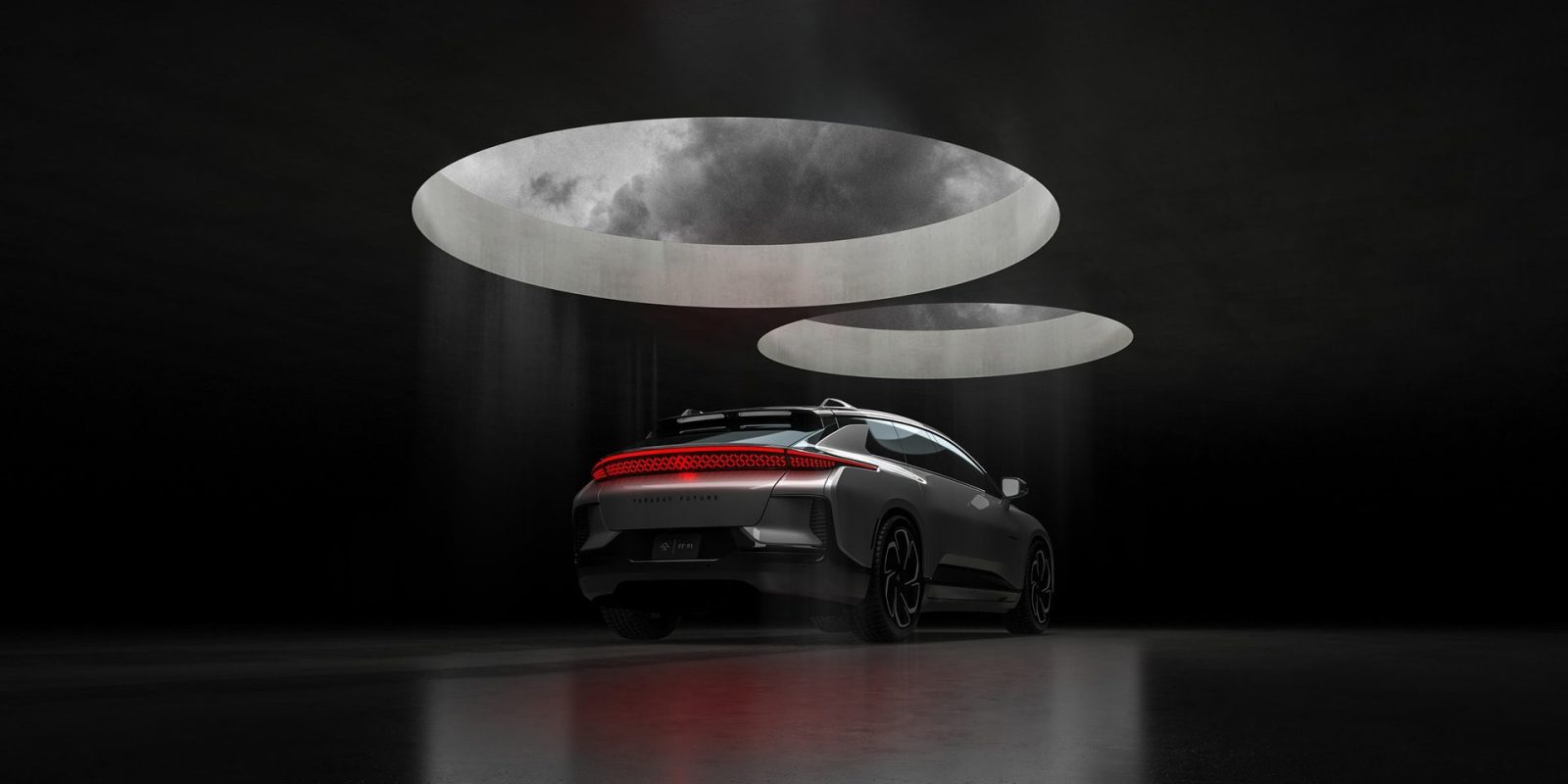
After starting production in March, Faraday Future has finally launched its FF91 EV, with an eye-watering $309k first-edition starting price with deliveries starting tomorrow, May 31.
Faraday made the announcements in a livestream on its website today. It titled the announcements “FF 91 Final Launch & Faraday Future 2.0,” suggesting an entry into a new phase of life for the company, and describing the new car as a “new species.”
The FF91 was originally unveiled in 2017. At the time, Faraday said that it intended to produce the car in 2018.
But electric car startup observers are no stranger to delays, so that timeline slipped. And slipped, and slipped – until five years later, we are finally here, at the actual start of FF91 production.

Faraday promised the FF91 would have 1,050 horsepower, a 130 kWh battery capable of 381 miles of range, 200 kW charging, and self-driving capability. It also promised a 0-60 time of 2.27 seconds, which was faster than “other benchmark cars” (namely, Tesla) at the time.
These specs were incredible at the time and are still very good, though after five years of delays “other benchmark cars” have caught up and exceeded those numbers. But Faraday has kept the same specs as its original announcement without watering them down in the interim, which is nice. In fact, today’s video claimed the battery will be upped to 142kWh (though this might be nominal pack capacity, as opposed to 130kWh usable).
Faraday received over 64,000 reservations in 36 hours after the original unveiling. But these were unpaid hand-raisers, and on a more recent check-in, the company claimed to have 14,000 unpaid reservations and only 401 paid reservations, though we haven’t heard anything on those numbers in the last year.
Faraday started the stream with a long discussion about its “FF aiHyper 6×4 Architecture 2.0.” Frankly, our eyes glazed over a little bit in this portion, but here’s the slide “explaining” it. Good luck:
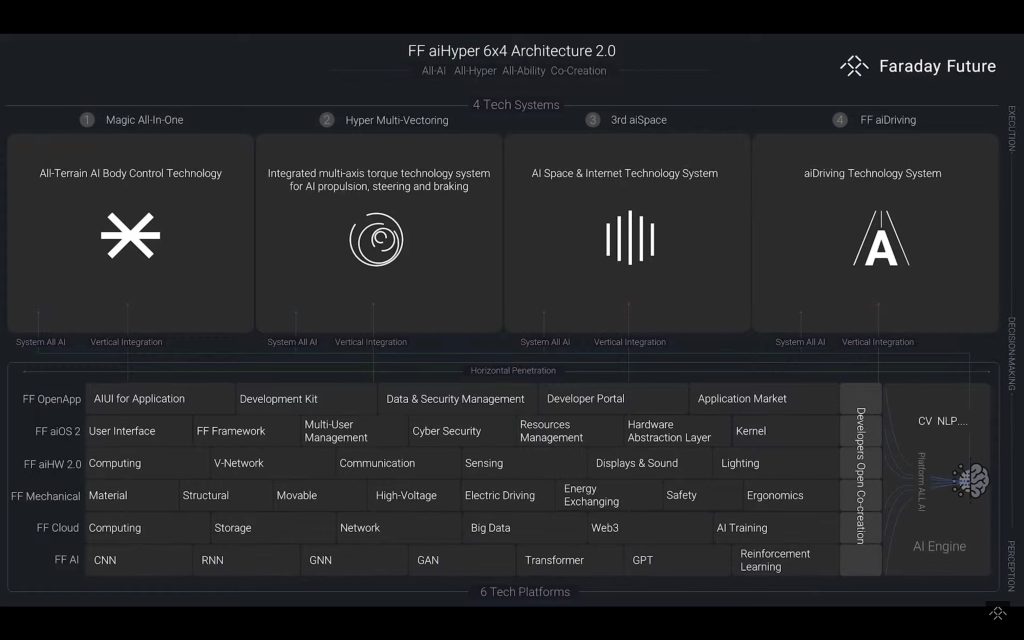
The company said that this is all meant to reflect 4 pillars of development – All-AI, All-Hyper, All-ability, and co-creation. As best we can tell, this was all meant to describe the car’s ability as taking advantage of the best strengths of sedans, sportscars and SUVs; comparing its capabilities to million-dollar hypercars; and using AI in its software-defined platform. Until recently, cars have been defined by hardware, but these days, many cars are being defined by software, with common software updates and modern infotainment systems.
With regards to the “co-creation” pillar, Faraday’s “co-creation platform,” which it is calling “The Mission Farad,” is essentially a referral program – refer friends to download Faraday’s app to get points (called Farads, the same name as the SI unit for electrical capacitance), and those points can be used for rewards. Faraday says these rewards “include awesome FPO titles to brag about on the FF App, Growth value and Co-creation points, and even future use of FF vehicles.”
In the future, Faraday seems like it will use this platform to gather customer feedback on its vehicles, and successful feedback/ideas will reward points to those who suggest it. Faraday is planning a “co-creation day” on June 6, which will presumably include more details on this. And we could imagine it turning into a sales referral program in the future.
The software-defined nature of the car enables various computing options, centered around a 27 inch rear screen (the “world’s largest in-car display”) and camera and a “10G in-vehicle network” (which isn’t a real thing) from three 5G antennas each connected to a different mobile carrier. Faraday mentioned that, among other things, this could enable livestreaming from inside the car (look out, INDI), and AI-powered contextual voice commands.
The car will also have an infrared camera in the driver’s seat to enable facial recognition for additional security. Faraday said that the car’s AI technology will enable it to “know you better than you know yourself,” which is frankly a little bit creepy, especially knowing that it has a camera on you at all times.
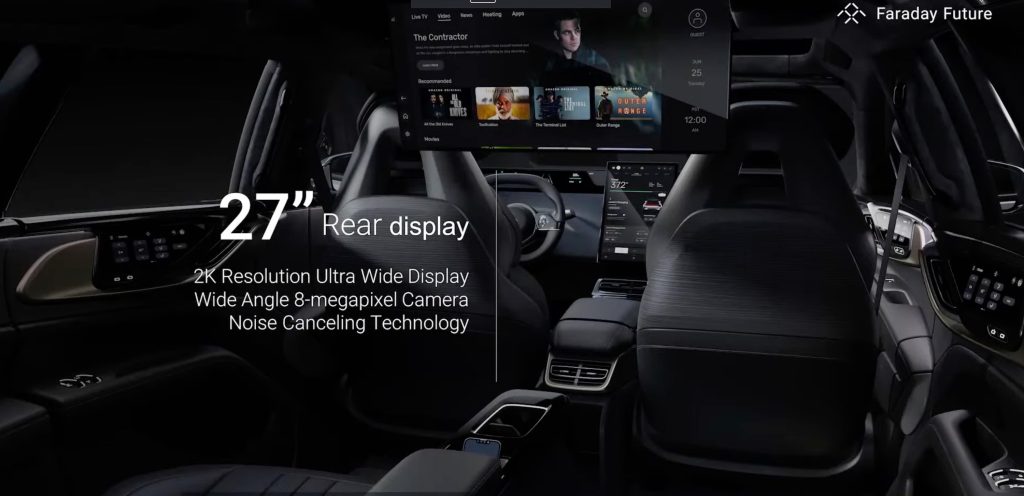
When you’re tired of all the livestreaming, you can relax in “spa mode” in the FF91’s “Zero G seats” capable of 60º recline.
Faraday now calls its car “the standard of Ultimate AI TechLuxury,” which is a bit of a mouthful. The company is aiming for the “ultra-spire” market, which as far as we can tell is its own term for luxury car customers. Embattled Faraday founder YT Jia compared the car’s level of luxury to that of Ferrari, Rolls-Royce and Maybach, setting quite a high bar.
Since then we’ve learned that Maybach is officially entering the EV market this year, so FF91 will have a direct competitor there. Faraday thinks that one day it will become a leader in the ultra-luxury market, which it says sells around 55,000 units globally per year. Though Jia also said that Faraday will not use the same upscale materials as are included in these other vehicles, and rather focus “silicon-based” luxury which allows owners to better leverage their time.
And of course, no automotive announcement can go without a discussion of autonomous driving technology, where Faraday made several claims about existing capabilities, and more coming later through over-the-air updates. Faraday calls these “FF aiDriving”:
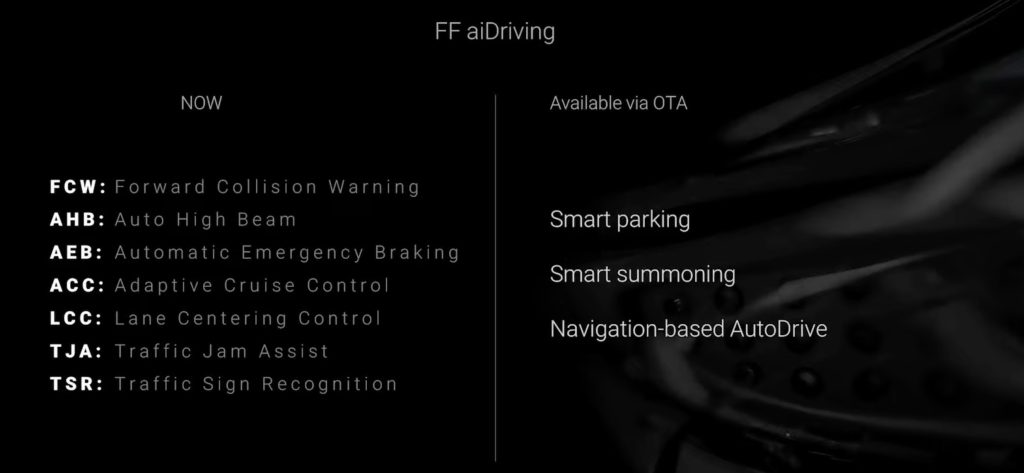
In addition to these promises of imminent self-driving capability (hmm, where have we heard this before…), Faraday says that the FF 91 will have the ability to create custom and proprietary maps, perhaps in order to help train the car to drive around private grounds that are not captured by public road maps. But the FF91’s FF aiHypercar+ subscription system will set you back $14,900 per year – but hey, at least you’ll get some Farad points thrown in.
And, finally, there’s the price, which was our main interest. And after 90 minutes of marketing buzzwords we finally got to the bottom line. All of the above will set you back a cool $309k for the limited-edition “FF 91 2.0 Futurist Alliance,” or $249k for the “FF 91 2.0 Futurist” to come later. No news, yet, on what the base price of the standard 2.0 edition will be.
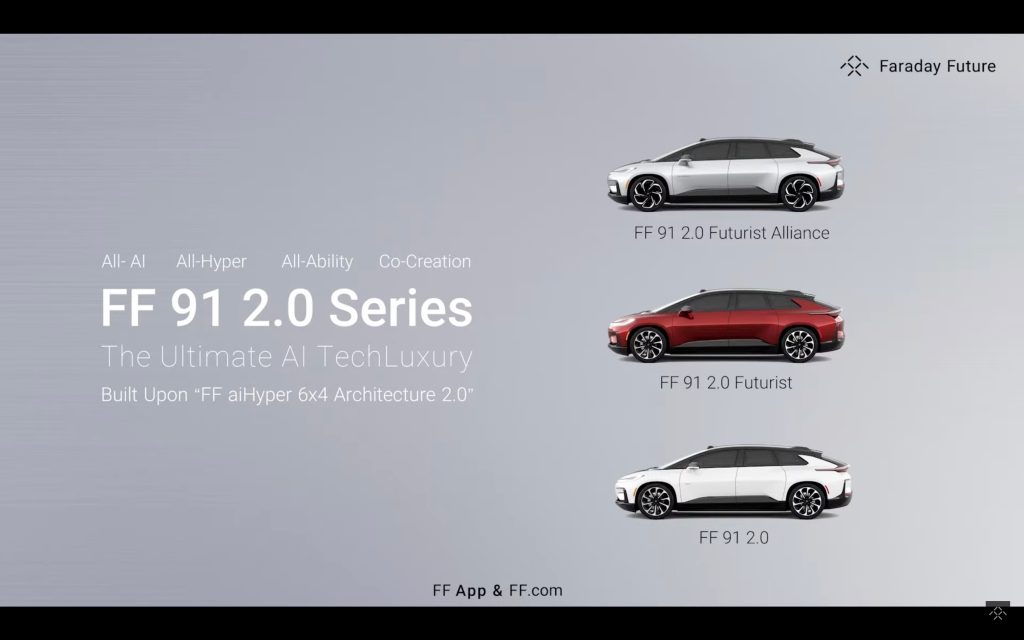
In a show of exceptional grace, the company also guarantees resale price, stating that it will ensure a 60% trade-in price after the first three years (thus only costing $41,200 per year!). But maybe owners should think twice before trading it in, because Jia says that the car will have “irreplaceable collectible value.”
Electrek’s Take
The FF91 was never going to be cheap, given how Faraday has always targeted it as a luxury vehicle, but now that we see the actual price, there’s a certain amount of reality that sets in.
With this pricing, Faraday is stuck between a rock and a hard place. It needs to set the price high in order to make money on a low production luxury vehicle, but a high price is a lot harder to command when there’s more competition in the market than there was 5 years ago, and when economic uncertainty and interest rates make it harder for people to justify these higher prices.
As we mentioned when Faraday started production, this has been a long time coming with lots of delays on the way. And, frankly, we did not expect the company to get this far.
When this car was originally announced, I noted that it seemed like a “kitchen sink” announcement, with a vehicle that included every conceivable concept car feature. In a word, I thought it was unrealistic.
So, it’s quite an accomplishment that Faraday has made it here. Bringing any car to market is incredibly difficult, so everyone involved deserves praise for that.
But today’s livestream felt much the same as the original announcement. The original announcement seemed driven by hype buzzwords more than anything, and today is no different. AI is the buzzword of today, and it was mentioned hundreds of times in the ~100-minute livestream. Faraday is even changing its stock ticker to “FFAI” from “FFIE,” according to today’s announcement.
The company couldn’t even keep its own buzzwords straight, simultaneously audibly calling one feature “AI carpet” while subtitles and slides called it “Magic all-in-one” – and then continued into discussions of hyper multi-vectoring, 3rd aiSpace and SynXwap, which is apparently some sort of NFT (that was 2021’s nonsense buzzword, get with the times Faraday).
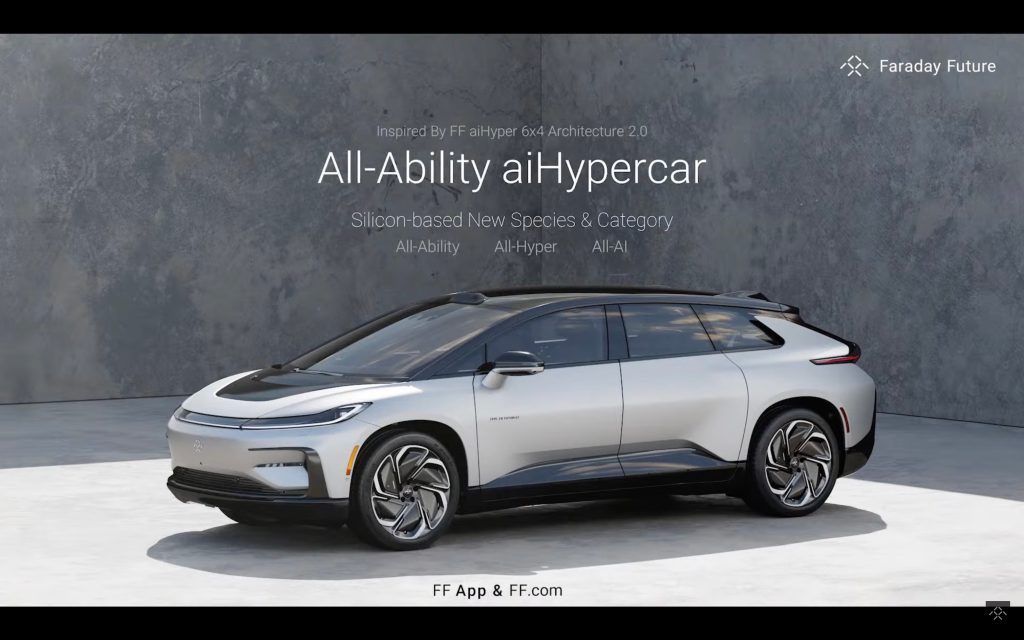
A tip: jumbled buzzword nonsense doesn’t make you sound accomplished or smarter than the observer, it makes you sound like a grifter. Knock it off, Faraday, if you can. Just ship good cars. That’s all anyone wants.
Despite finally shipping cars, this is only the beginning of the challenges related to building vehicles. Now Faraday has to find customers, and at the price it’s asking, that could be a challenge.
There are already some excellent electric cars on the market, from both mainstream players and upstarts. These span a pretty wide swath of price ranges and levels of luxury. While the FF 91 promises significant luxury and seems to focus on extreme comfort of its riders (and “riders” is the right term here, since the company’s focus on rear seat comfort is aimed at the Chinese market, where it’s common for the wealthy to have personal drivers), it’s not the only startup in the luxury electric car market.
Lucid Motors also occupies that space, and has some very good technology going for it, and a head start on Faraday. And yet, it’s still on rocky ground in this market, and is having some difficulty finding buyers even at the high 5 figure level. The same goes for the behemoth of the EV industry, Tesla, whose Model X accounts for a tiny percentage of the company’s sales – and its base price also has one less digit than the FF91’s.
Since Faraday is aiming well past this high price range, it’s likely to have an even larger struggle finding buyers. Maybe some will come out of the woodwork looking for a luxurious electric crossover from a startup other than Tesla or Lucid at three times the price, but that is a rather small niche at this point.
Especially if Faraday is going to call its own car an “elephant,” which it did not once, but twice during this announcement video, with one of the odder marketing slogans I’ve heard: “even elephants can dance the ultimate dance.”
Here’s the full livestream of the announcement:
FTC: We use income earning auto affiliate links. More.